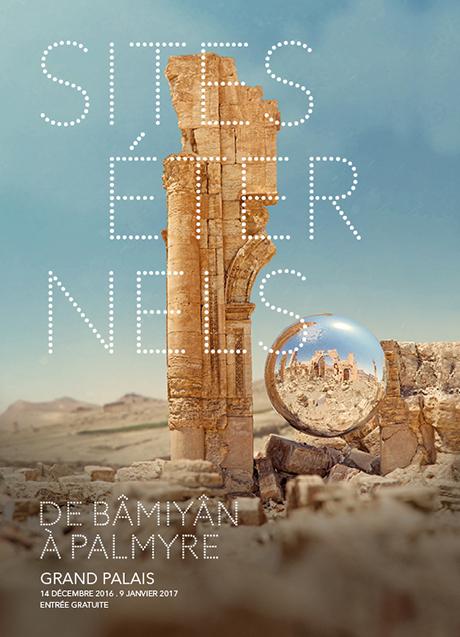
With World Heritage sites in the Middle East under siege by ISIS, the United Nations Educational, Scientific, and Cultural Organization (UNESCO) is underscoring the importance of protecting cultural property by recreating four damaged or endangered locations in a free exhibition at the Grand Palais in Paris.
Currently, some 51 World Heritage sites are considered endangered, a list that greets visitors to the new exhibition, titled “Eternal Sites: From Bamiyan to Palymra.” Designed to offer an immersive experience, there is 360 degree video footage of the four featured sites—Khorsabad in Iraq, Kerak Castle in Jordan, Palmyra in Syria, and the Umayyad Mosque in Syria—none of which are currently safe to visit.
“When [the] culture of [a] people is threatened, when their heritage is attacked, it is these values and fundamental rights that are targeted. That’s why heritage protection is inseparable from [the] protection of human lives. We should not have to choose between those two,” said UNESCO director-general Irina Bokova in a statement. “When culture is at the forefront of the crisis, it must be at the forefront of building peace.”
The exhibition is presented in partnership between UNESCO, digital technology company Iconem, and the Louvre. There are four historic artifacts from each site on loan from the Paris museum, paired with Iconem’s virtual reconstructions and videos tracing the chronological development of each location.
A virtual 3D reconstruction of Palmyra’s Triumphal Arch. © Iconem, DGAM.
Archival photographs from the 19th and 20th century along with present-day imagery should offer visitors an understanding of how these archaeological sites have changed.
The show will conclude with a room focused on how UNESCO works to preserve endangered sites, with a touchscreen showing how Palmyra‘s Triumphal Arch was destroyed over time, and how it might someday be rebuilt.
Irina Bokova’s statements were translated from French by Audrey Fair.
“Eternal Sites: From Bamiyan to Palymra” is on view at the Gran Palais, 3 Avenue du Général Eisenhower, Paris, December 14–January 9, 2017.